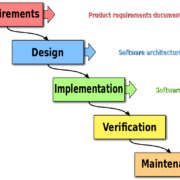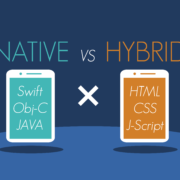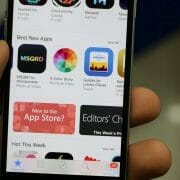4 Things You Can Learn About Your Clients From Their App Use
Every savvy appreneur should monitor app use to gauge whether an application meets your desired goals and expectations. And that’s easy to do due to the many excellent analytics and monitoring tools available today. Of course, users and various governing bodies, such as the EU, have expressed concern about how companies handle user data and privacy.
As someone that releases or plans to release apps, it’s your job to ensure that you comply with all regulations applicable to the target territory. But the good news is that you don’t need to harvest an extraordinary amount of data to gain a clear picture of app use. After all, you primarily care about your app’s performance and whether users easily complete tasks available to them.
You don’t want to know users’ home addresses or pet names unless that’s necessary for the functionality of your app. But even for such cases, you’ll need to gain user consent via a mobile opt-in option. Ultimately, you want to operate under an ethical and legal framework that fosters trust with all your users.
We also understand that it’s not always clear what you must look for when monitoring app use. So, we’ve compiled this handy list to help you laser focus on the key indicators that will reveal more about your clients and users.
1. Does Your App Use Data Reveal A Distracted User Base?
Unfortunately, in our information-rich world, attention spans have declined significantly. Digital and social media have played a significant role in reducing attention spans, and so has a constantly online way of life.
But what does this mean for your upcoming app project? Your app should have an easy-to-understand and easy-to-navigate user interface (UI). And keep it simple by making it easy for users to complete tasks quickly. Once you launch your app and monitor app usage, you should achieve favorable results by keeping users engaged.
If that’s not happening, you may have added features and UI elements that cause confusion or distraction. Users will often leave an app and even delete it altogether if they don’t understand how to use it or are not presented with the most crucial information as early as possible.
You’ll also want to know whether your app’s response times lag longer than usual. Therefore, you should monitor all response and system feedback times. If these exceed 50ms for response times and 400ms for web-based system feedback, you need to patch up your app immediately, as most users won’t put up with any application that seems slow and clunky or hinders productivity.
2. Where Are Your Clients Spending Most Of Their Time?
It’s essential to track the time users spend on your app. And not only that, but you should also track how much time they spend on each page of your app.
For example, you may have created a food delivery app that promises users a one-click checkout experience. Now, users are excited about the prospect of quickly and conveniently ordering their food, so they flock to your app. But then, you notice that few users are completing orders timeously, and many abandon products in their virtual carts.
So you decide to check your analytics to determine what’s causing the bottleneck. You start by analyzing how much time users spend on the homepage of your app and right through to the checkout page. And the data reveals that users quickly find the products they want. Also, they don’t experience any noticeable problems when adding products to their carts.
Everything seems good so far, but then you get to the data regarding your checkout page. Surprisingly, users spend three times longer on the checkout page than on the rest of your app. And this is not good because it negates the whole purpose of your app, which is to provide a hassle-free checkout.
However, you still don’t have enough information, so you decide to drill down to a more granular view of your data. And doing so reveals information that you didn’t expect, which shows that users spend an excessive amount of time filling in their payment information. Thus, you decide to improve the payment form and enhance its format by refreshing its credit card and other payment method icons.
3. Are Your Users Cheating And Ruining The Experience For Everyone?
If you’re a mobile game developer or creating a competitive and interactive app, you should care whether users cheat. Yes, you heard correctly; users will act in bad faith and cheat in mobile games. And that’s especially true for games that offer money prizes, gems, and in-app purchases. Furthermore, Android games are particularly vulnerable to cheating and game modification apps, such as Creehack, Game Killer, and SB Game Hacker APK, to name a few.
And while it’s common practice to hack and modify PC games, we should bear in mind that the PC is a fairly open platform. On top of that, some PC game developers encourage mods and even provide their own modification tools. And the reason they do this is that it helps extend the longevity of their games, as users will create and share additional content that’s mostly free.
But even on the PC, hacking a game for the purpose of cheating is unacceptable, causing developers and publishers to ban users that attempt such an action. Therefore, mobile game developers should never take cheaters lightly, as they can cause monetary loss and reputational damage.
You should implement a pattern detection system that analyzes users’ device memory and storage for any cheat apps. Also, some popular cheat apps attach their debugger to a process, so make sure that you’re scanning for these. And if you’re creating a multiplayer game using the Unity engine, then use Guardsquare’s DexGuard and iXGuard to harden the security of your Android and iOS games.
4. Do Your Users Face Too Many Choices?
The best apps often have a simple UI and are designed to serve a singular purpose. Therefore, you never want to create an app that tries to do too many things. Or it does one thing well but presents users with a plethora of features and options.
Ideally, your app should focus on a singular purpose and its features pared down to the bare minimum. And that’s because users struggle to navigate apps that offer them too many options. They may feel anxious when facing too many options, many of which may be unnecessary or be too complex.
Furthermore, when users face too many choices, they’re forced to spend more time thinking before coming to a decision. But if they have less choice, users feel less burdened to engage in a complex decision-making process. And navigating the app feels like a more fluid and natural experience, especially if they can complete the most crucial tasks in a short amount of time.
And if users use your app to complete a complex task, then break it down into several smaller and manageable tasks. Always offer an enjoyable and straightforward user experience, as many users may not have the required technical skills.
The Bottom Line
As we’ve seen, app use can reveal much about your clients, provided you’re using the correct monitoring and detection systems. And this information provides you with greater insight into what you’re doing right or wrong with your apps. Contact NS804 today to learn how we’ll help you create phenomenal apps that will amaze even the most demanding users!










 https://unsplash.com/photos/qC2n6RQU4Vw
https://unsplash.com/photos/qC2n6RQU4Vw
Leave a Reply
Want to join the discussion?Feel free to contribute!